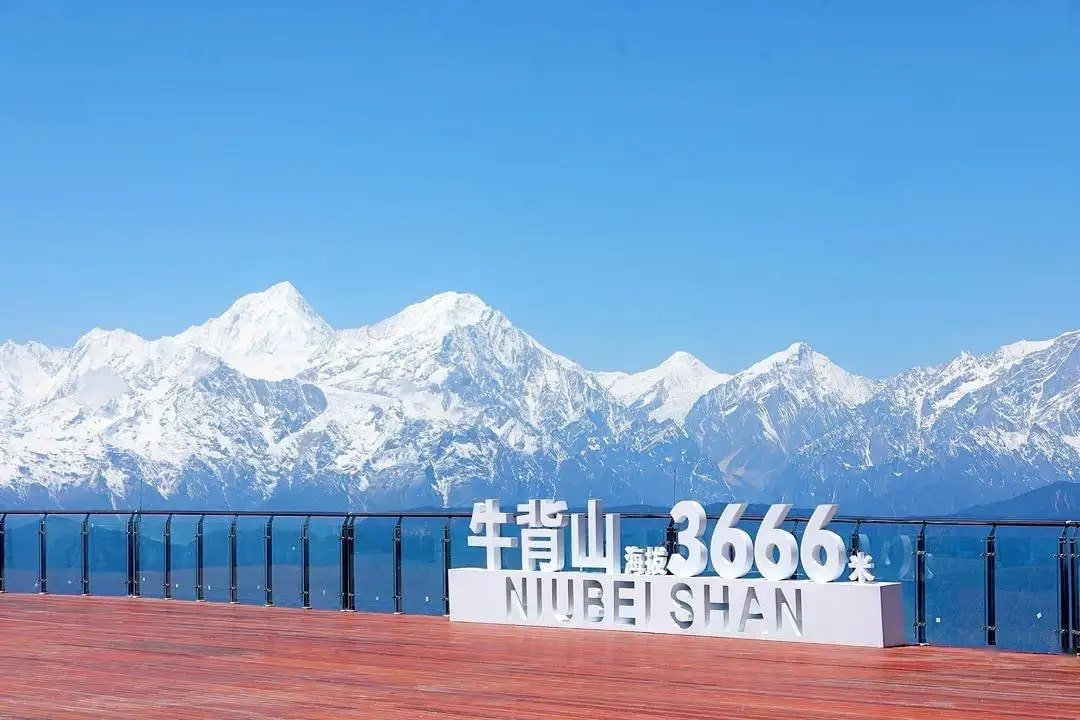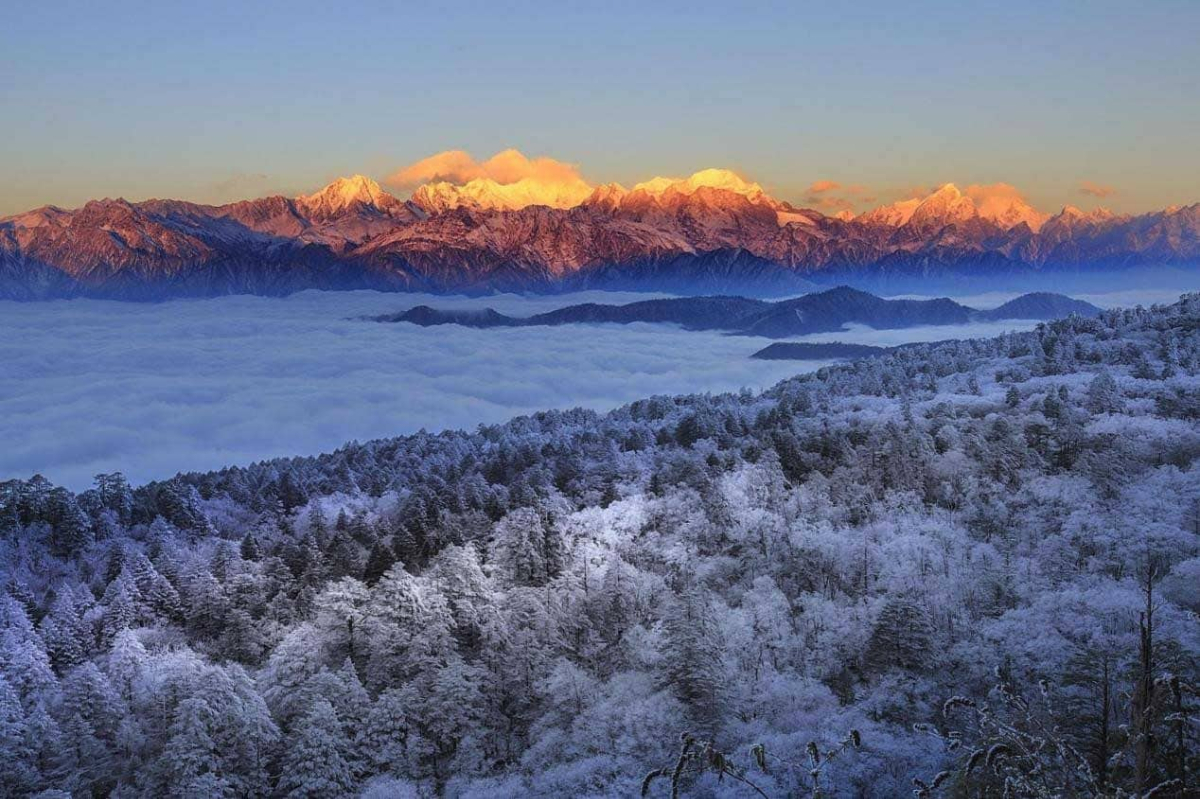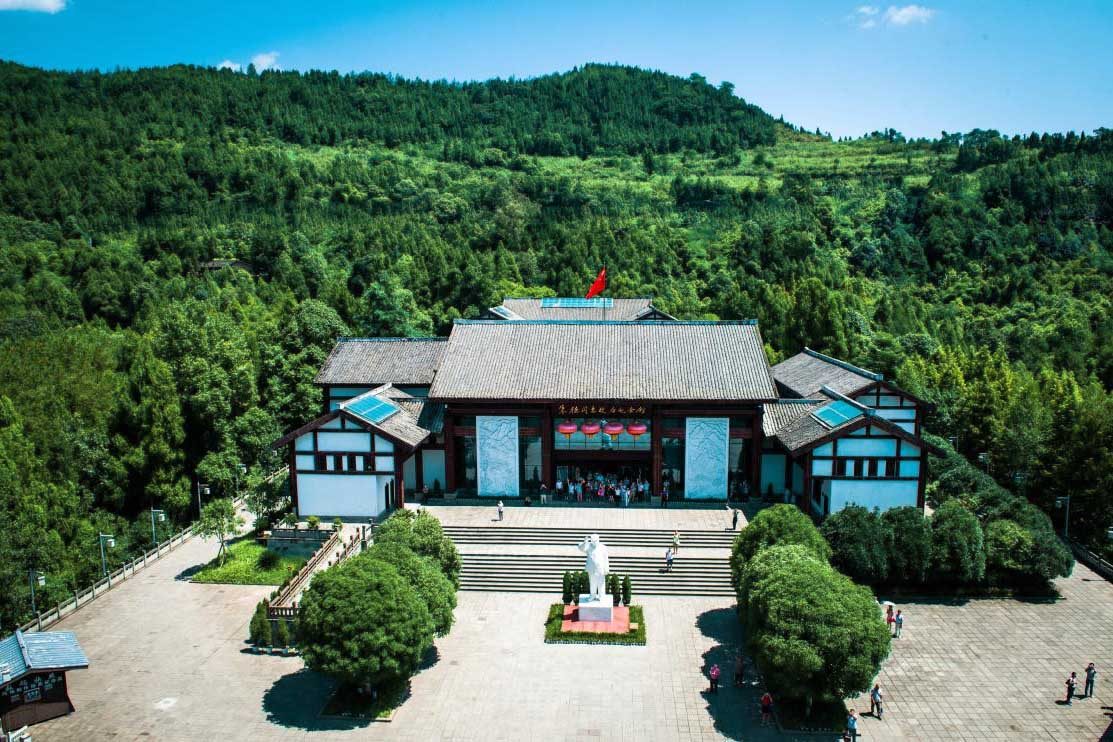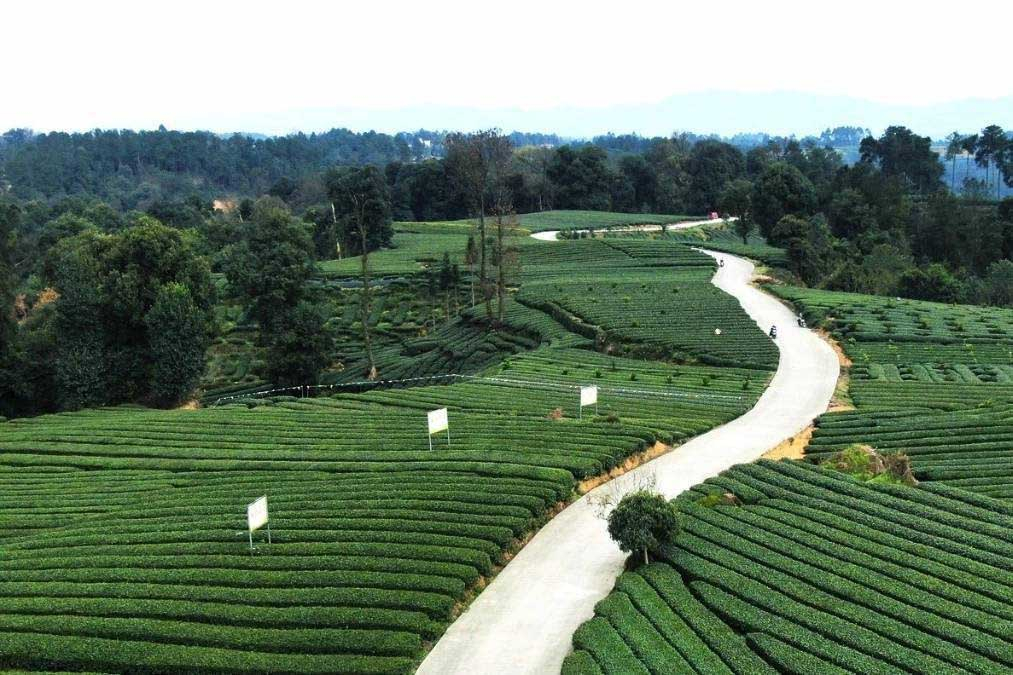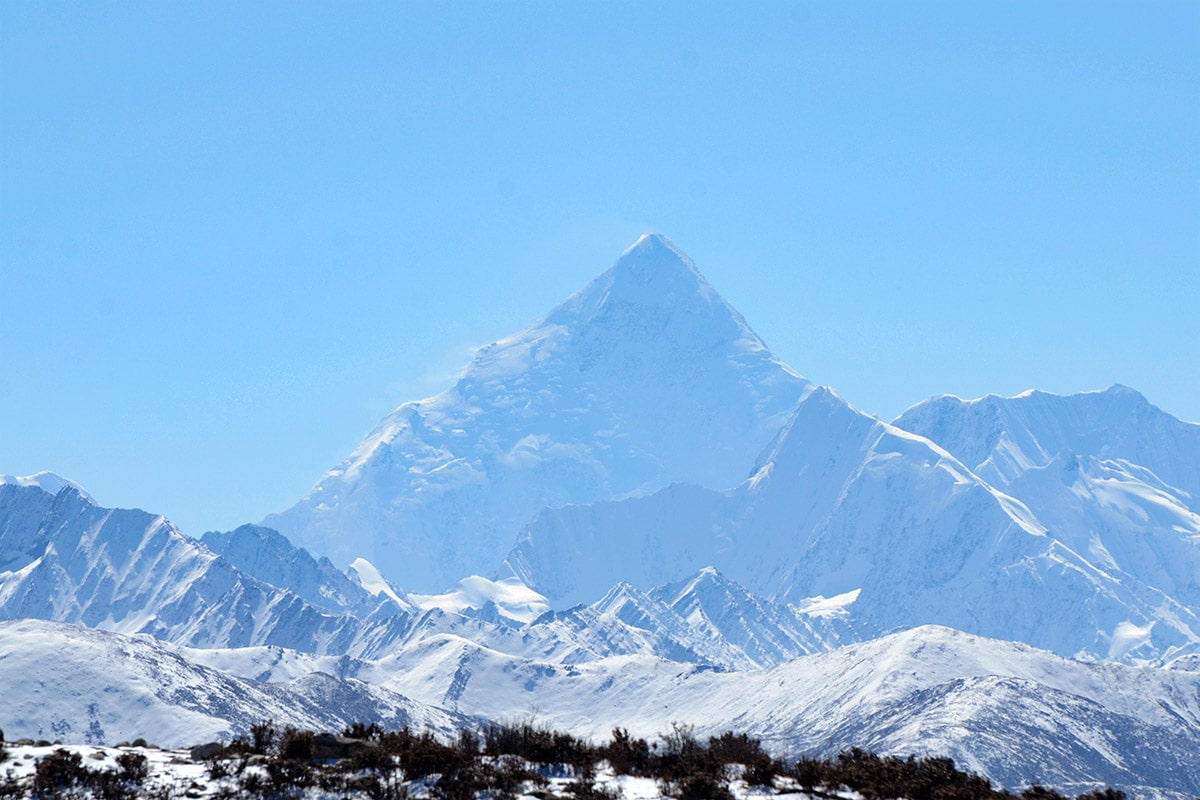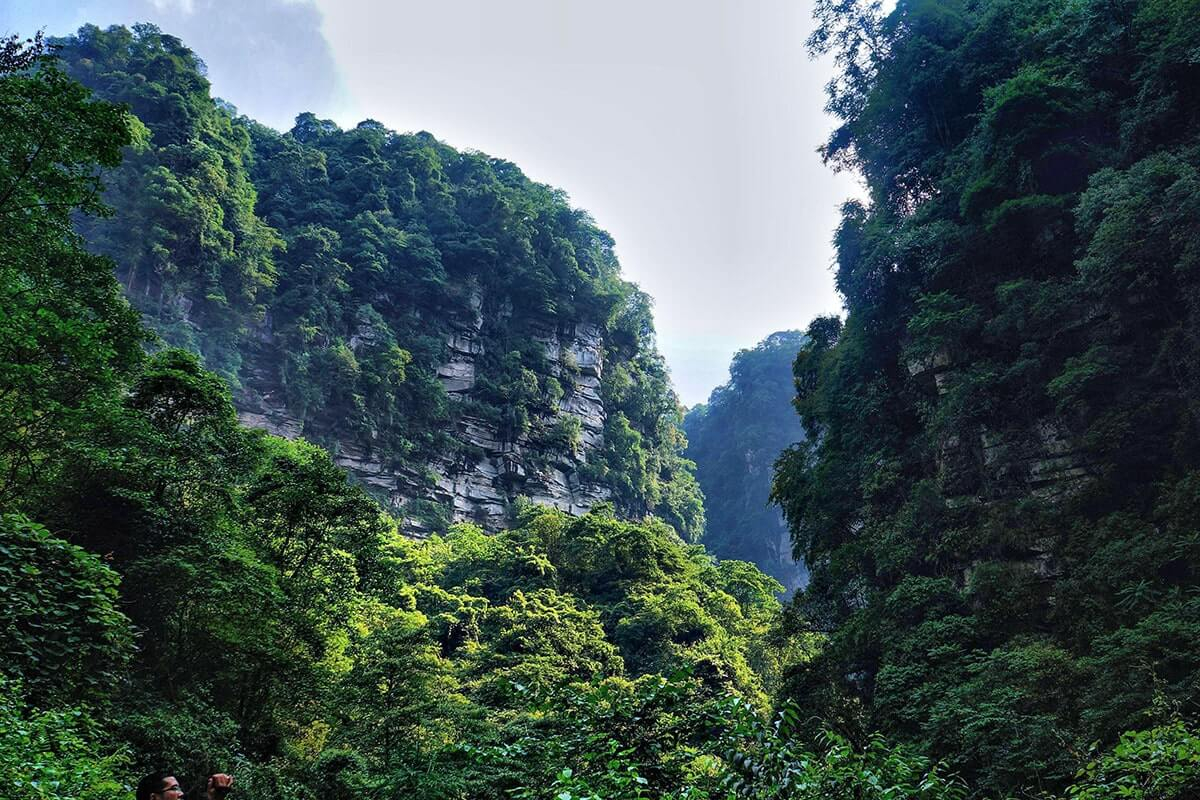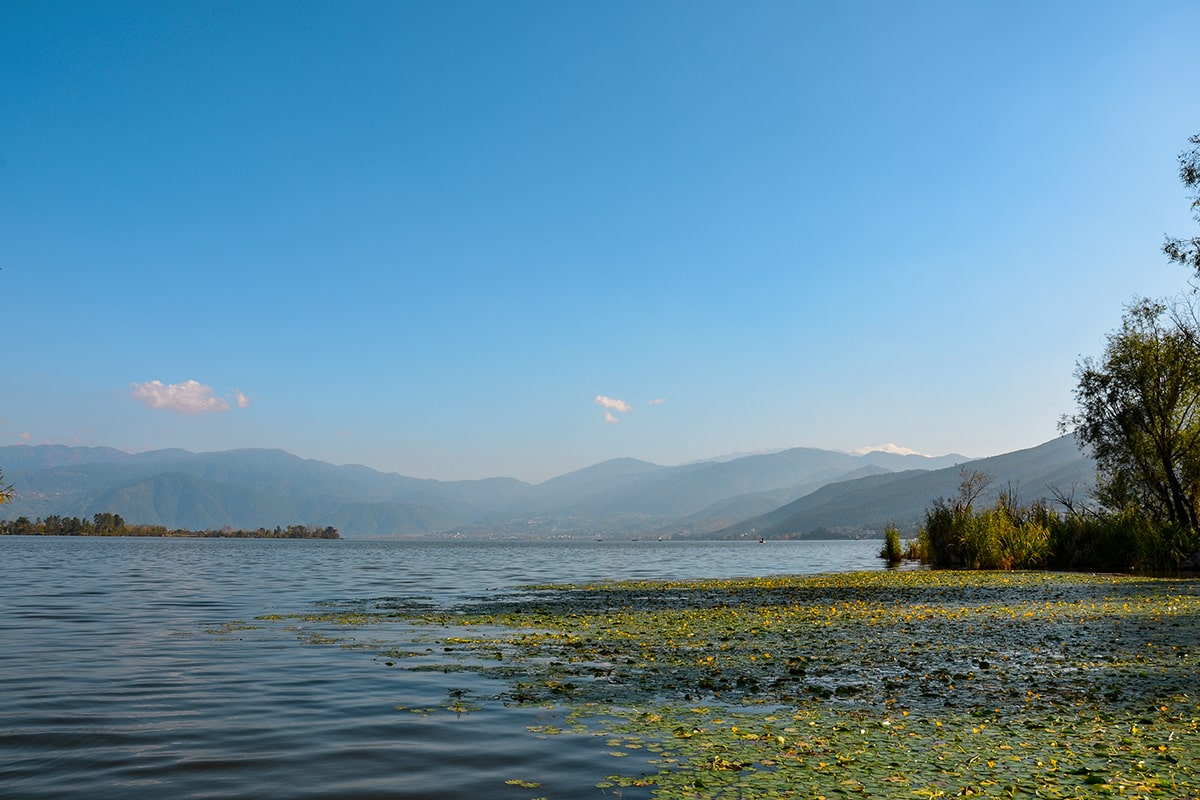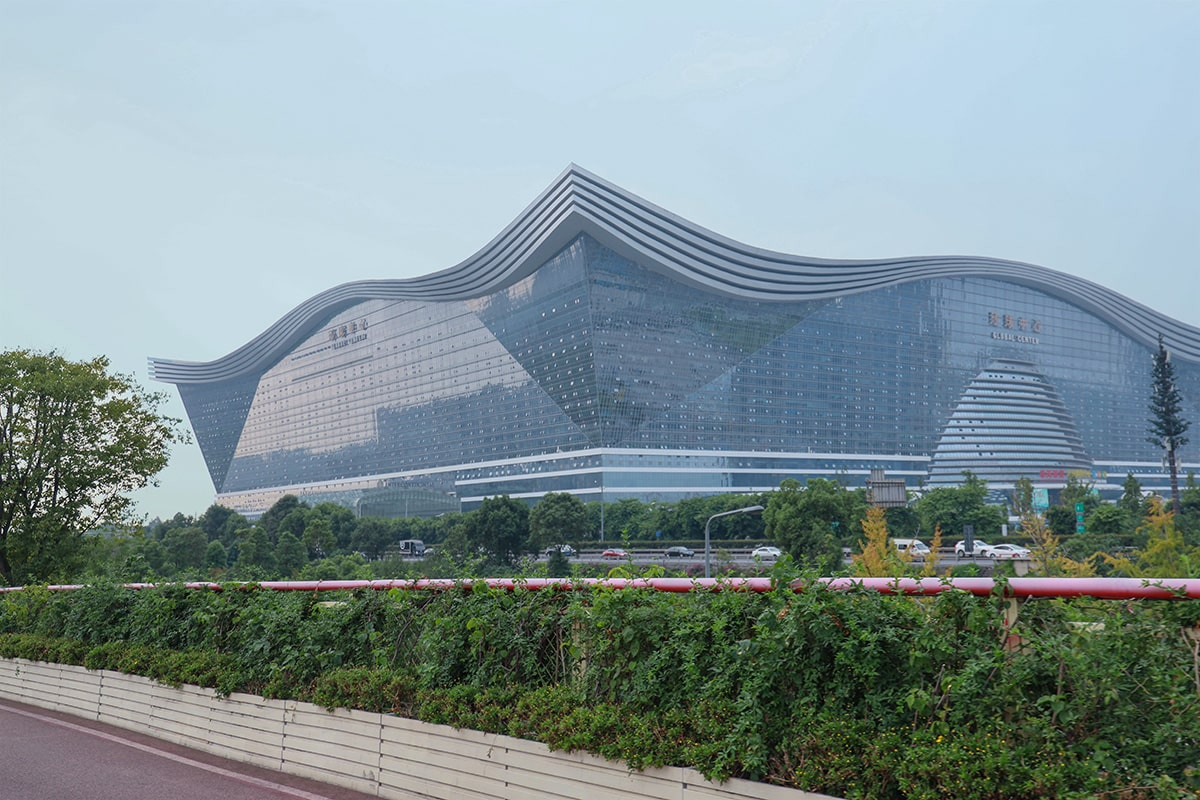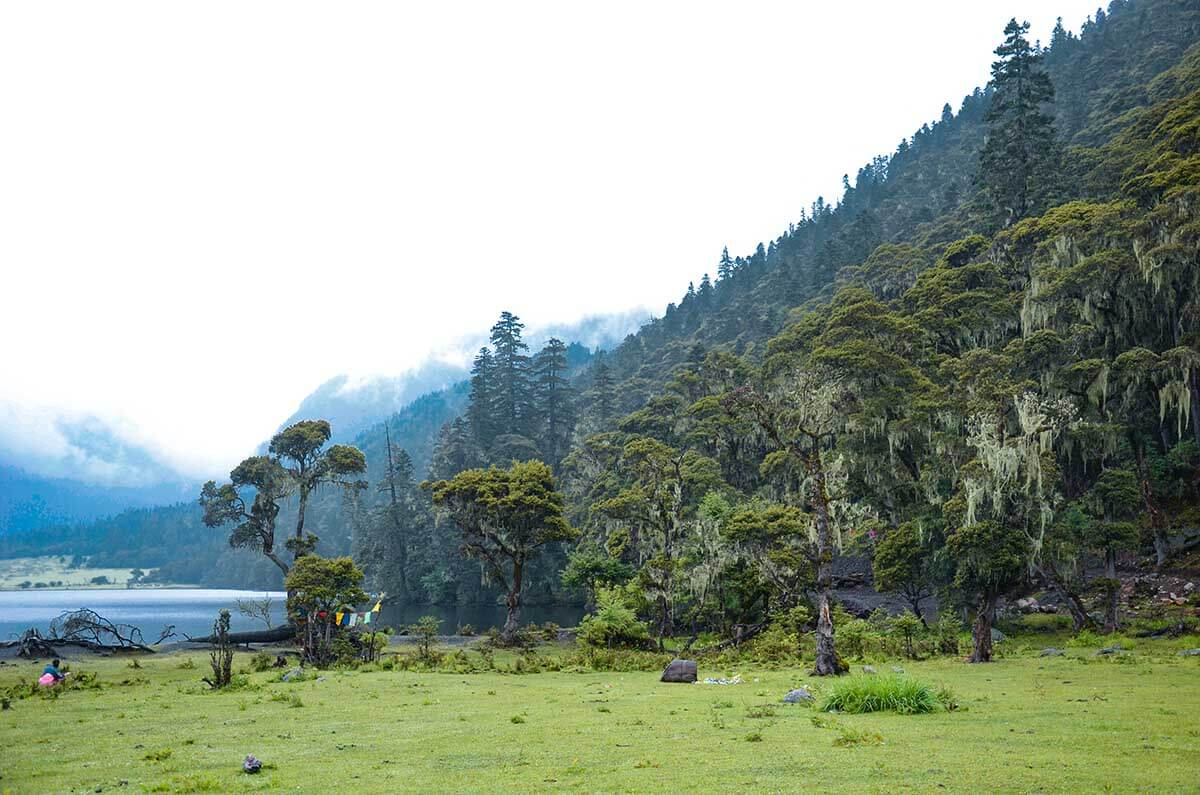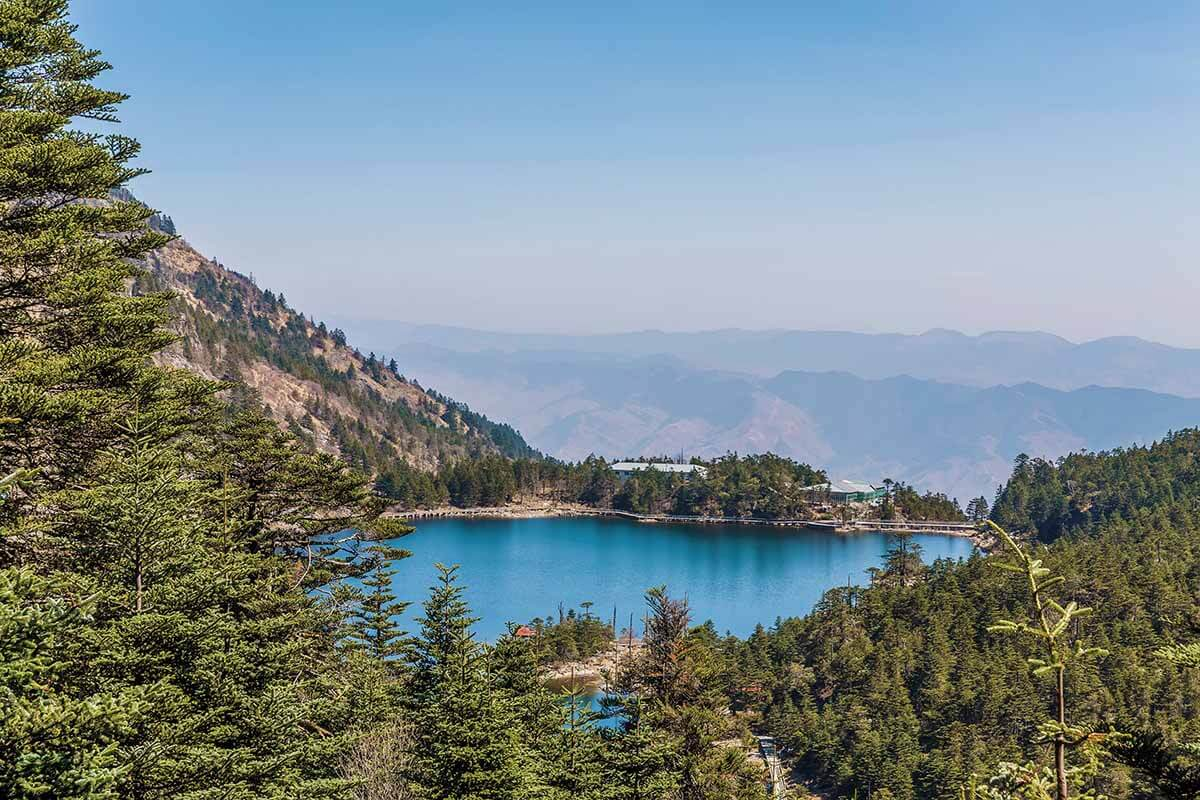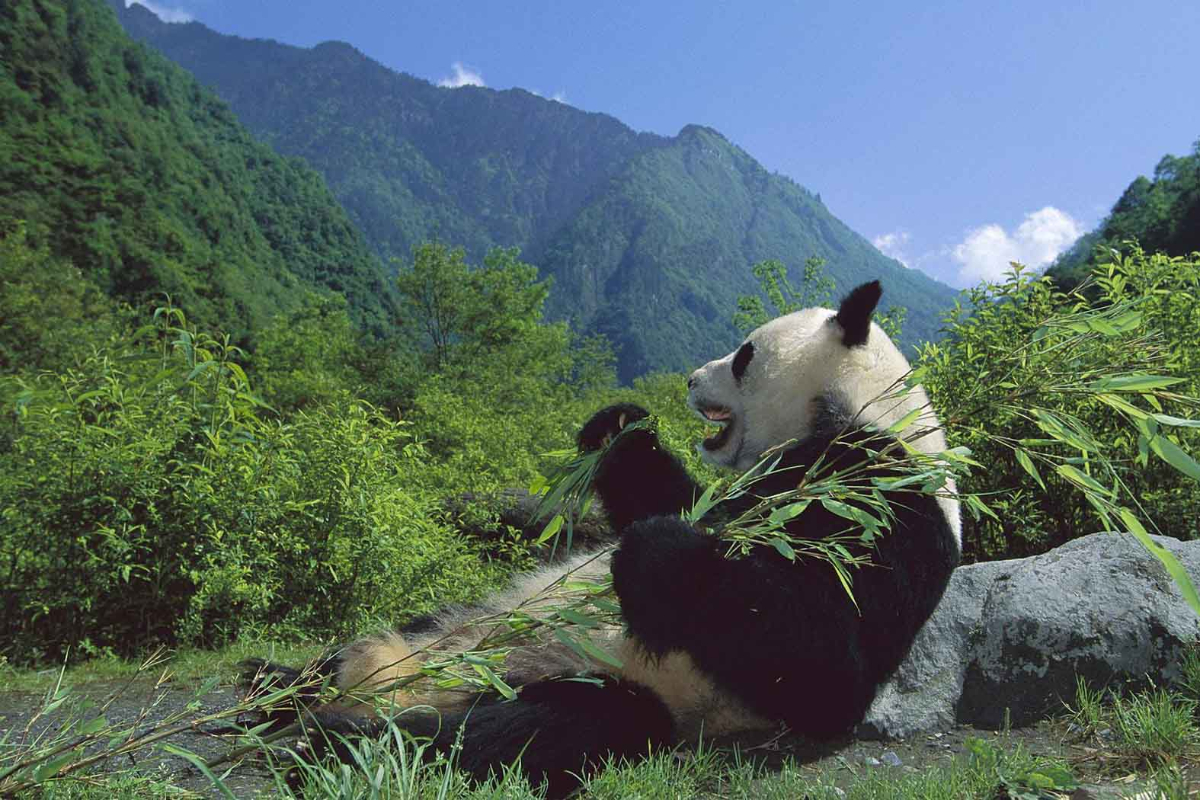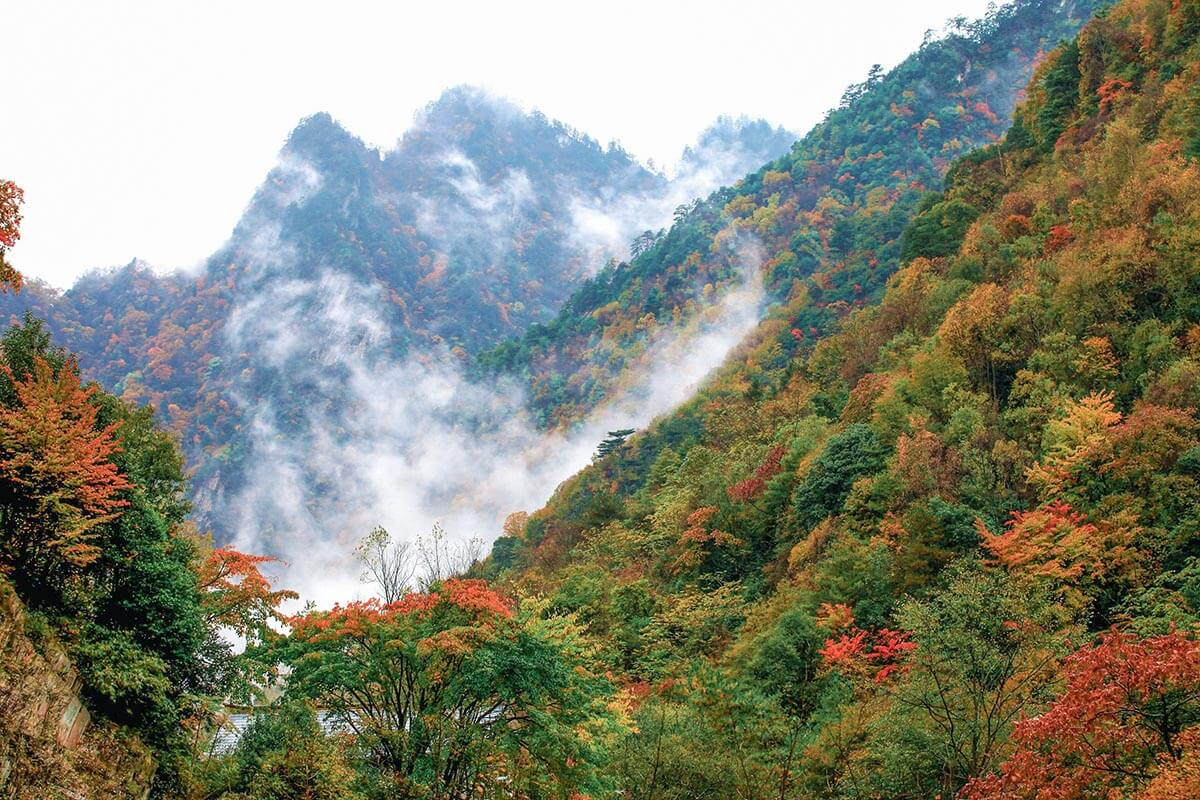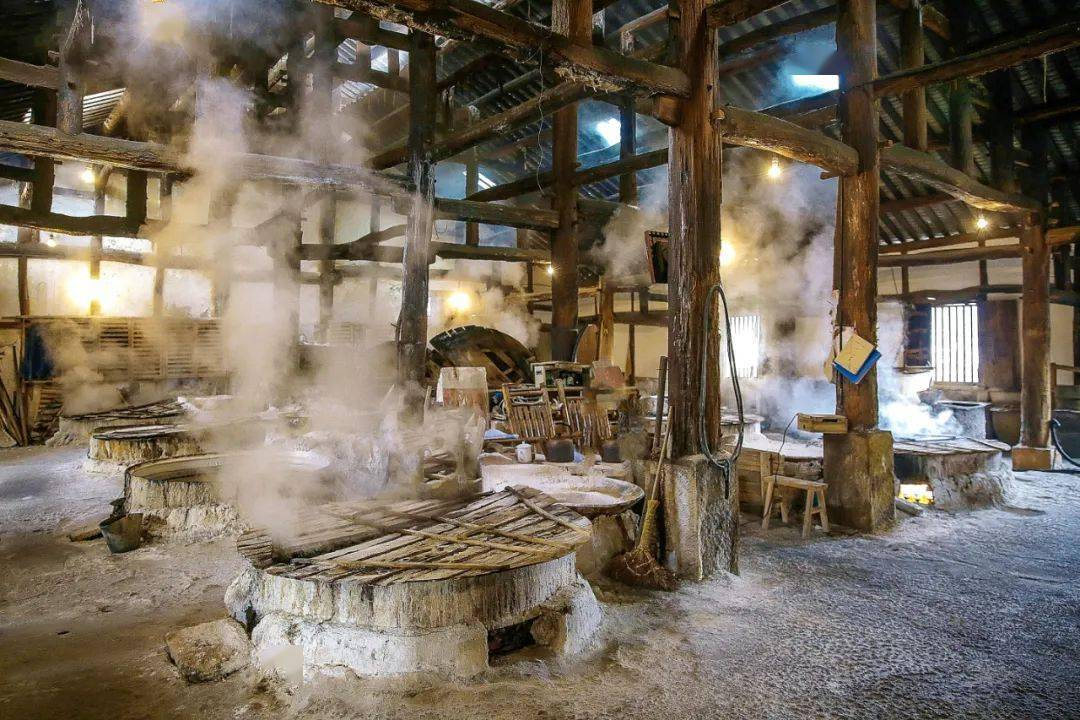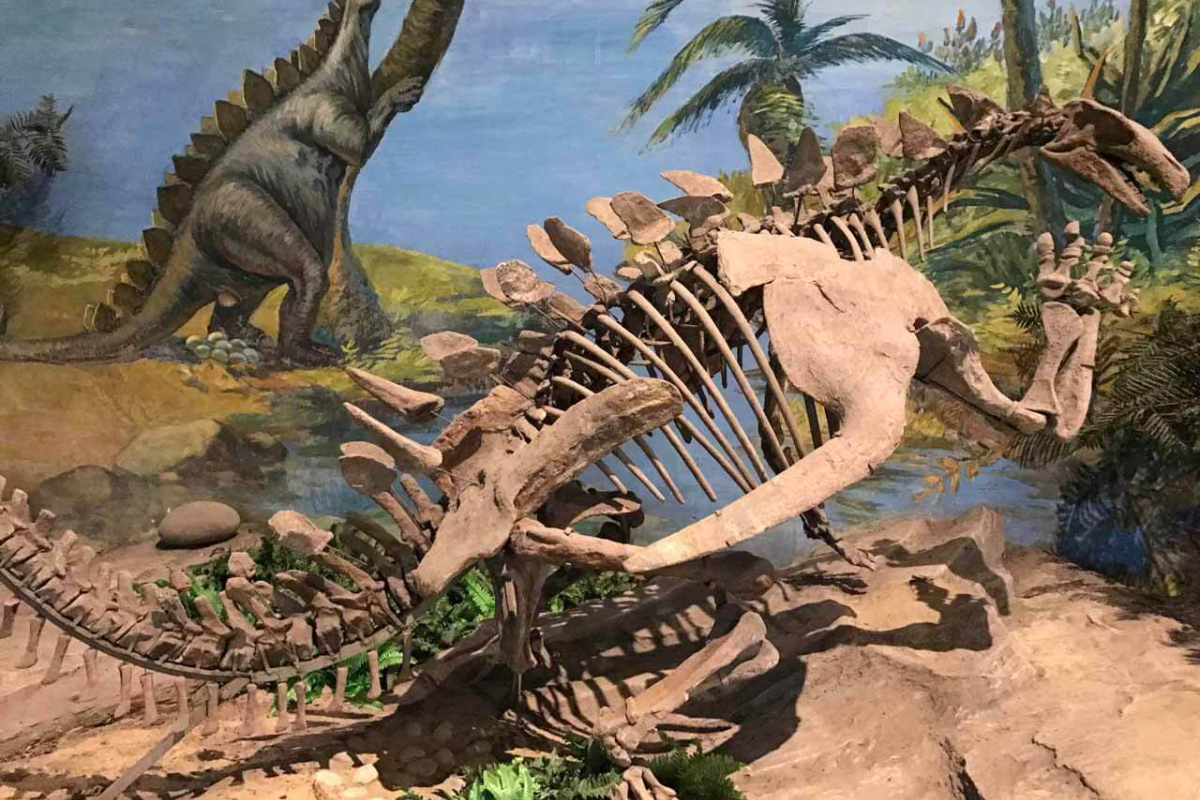Mount Qingcheng
Chinese name: 青城山 (Qing Cheng Shan)
Location: Southwest of Dujiangyan City, about 68km from Chengdu
Ticket: Entrance ticket CNY80.00, electric cart CNY20.00, cable car CNY60.00, Yuecheng Lake boat CNY10.00
Estimated tour time: 3-4 hours
Recommended time to visit: Whole year
Nearby attractions: Dujiangyan Irrigation system, Dujiangyan panda base, Jiezi ancient town, Wenchuan Earthquake Site, Jinsha Museum, etc.
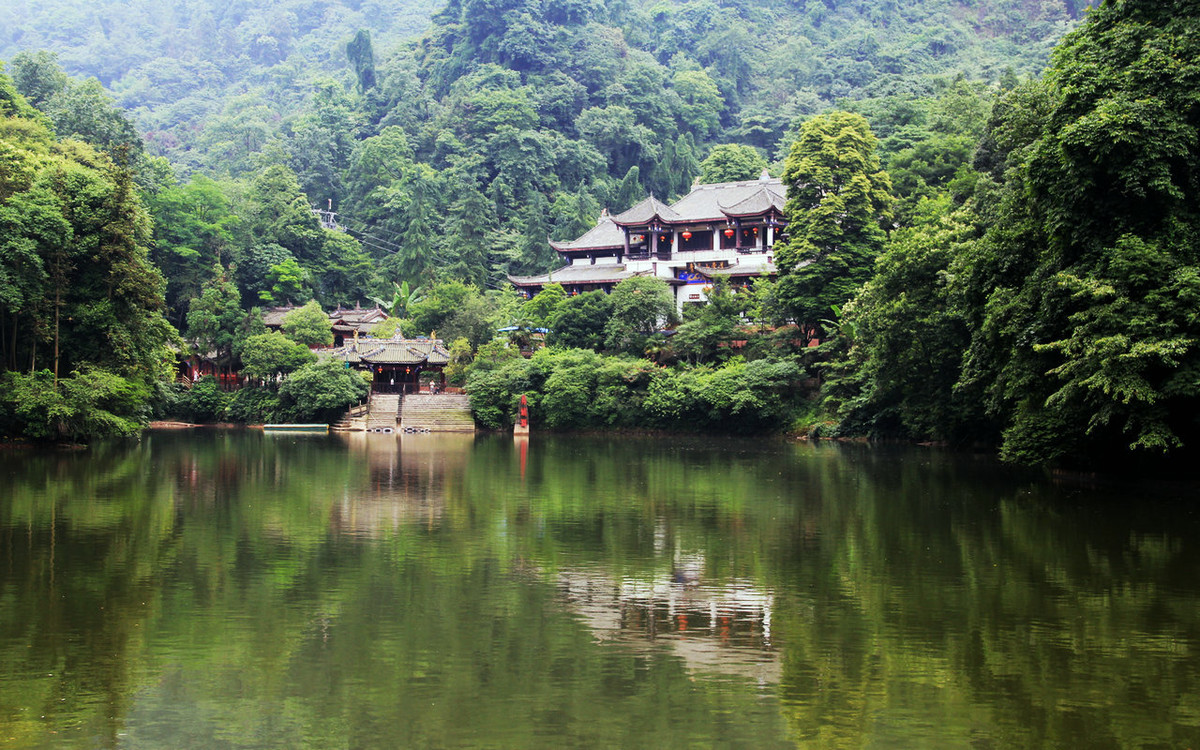
Qingcheng Mountain is situated in the northwest of Chengdu plain, around 65 km away from downtown Chengdu. The name Qingcheng means “green city”. The mountain has 36 peaks. It is named as “green city”, because some of its green cliffs are shaped like city walls. The multi-peaked mountain rises up to 1,600 meters and has a high rate of vegetation coverage. Mount. Qingcheng is well-known in China for its unique beauty which is called “You” in Chinese. There is no appropriate word or expression in English for this Chinese word “You”. It conveys various implications, such as secluded woods, peaceful zigzag paths, faintly fragrant flowers, and delightful sounds of singing birds and murmuring streams.
As the birthplace of Taoism, the native religion of China, Mount. Qingcheng was listed as a world cultural heritage site by UNESCO in 2001. It is rich in Taoist culture. As early as in the Eastern Han Dynasty, Zhang Daoling(34-156) came to Sichuan, and founded the Chinese native religion, Taoism. The mountain used to be the place where he practiced and cultivated his Taoism. Taoist doctrine was built on the ancient witchcraft, recipes for immortality, and the concepts of Huangdi(Yellow Emperor) and Laozi.
Taoists believe that all things in the universe have their own spirits(gods). The Taoist gods are said to live far away in their ten celestial caverns and 72 happy lands. Mount. Qingcheng is known as the No.5 celestial cavern. Why was Qingcheng Mountain chosen as a celestial cavern? It is probably because of its unique beauty, the so-called “You”. It is just considered as a kind of land where gods live.
Qingcheng Mountain consists of two parts, the Front Mountain and the Back Mountain. The Front Mountain is usually referred to as Qingcheng Mountain, because it is the birthplace of Taoism, more famous than the Back Mountain. This article focuses on the Front Mountain. If you are interested in the Back Mountain, please click the Back Mountain to read more.
● Highlights of Mount Qingcheng
Qingcheng Mountain is crowned as the No.1 Taoist Mountain in Western Sichuan. It has some other nicknames, like Chicheng Mountain, and Zhangren Mountain. Zhangren means father-in-law of a man. It is said that the Yellow Emperor once came to Mount. Qingcheng, and importuned an immortal to teach him Tao. The immortal was called Ningfeng. He was granted by the Yellow Emperor with the title the Father-in-law of Five Mountain Gods. The five mountains refer to the top famous mountains in China, including the East Tai Mountain, the South Heng Mountain, the West Hua Mountain, the North Henng Mountain and the Central Song Mountain. Because Ningfeng resided in Qingcheng Mountain, the mountain is also nicknamed after his title as Zhangren Mountain.
Qingcheng Tai Chi Boxing
Tai Chi Boxing was created by a Taoist master, Zhang Sanfeng. Zhang Sanfeng was born in 1247. He lived in Wudang Mountain, Hubei Province. There are several schools and styles of Tai Chi Boxing in China, like Wudang Tai Chi, Chen’s Tai Chi, Yang’s Tai Chi, and Qingcheng Tai Chi. Qingcheng Tai Chi is also known as Xuanmen Tai Chi. It was created on the base of Wudang Taichi, and combined with local martial arts. The local martial arts could be traced back to more than 2,000 years ago. It is one of the main martial arts schools in China. Qingcheng Tai Chi is also a source of inspiration for action choreography in Kung Fu Panda 2.
Jianfu Temple
Jianfu Temple is located at the foot of the mountain. It could be traced back to 724 during Kaiyuan Period of Tang Dynasty. It was originally named as Zhangren Temple. Afterwards, the temple was renamed as Huiqing Jianfu Temple in the Song Dynasty(960-1279). The current buildings in the temple could be dated back to 1888 during the Guangxu Emperor’ reign of Qing Dynasty.
Along the south to north axis, there are three major building in the complex. The three major buildings are Changsheng Hall, Zhangren Hall and the Back Hall.
Changsheng Hall contains a statue of Fan Changsheng(218-318). Fan Changsheng was a very famous Taoist master, who founded Tianshi Sect of Taoism. He once served as the prime minister of Chenghan Kingdong(304-349).
Zhangren Hall stands behind Changsheng Hall. The immortal Ningfeng and Du Guangting(850-933) are enshrined in the hall. Du Guangting used to be a leader of Taoism by the end of Tang Period. He composed a large numbers of Taoist articles in his life. One of his works is called A Biography of Qiuran. It is considered as the first swordsman novel created in China.
The last one on the axis is the Back Hall. The figures enshrined in the hall are Laozi in the middle, Donghua God and Master Wang Chongyang on both sides.
Shangqing Temple
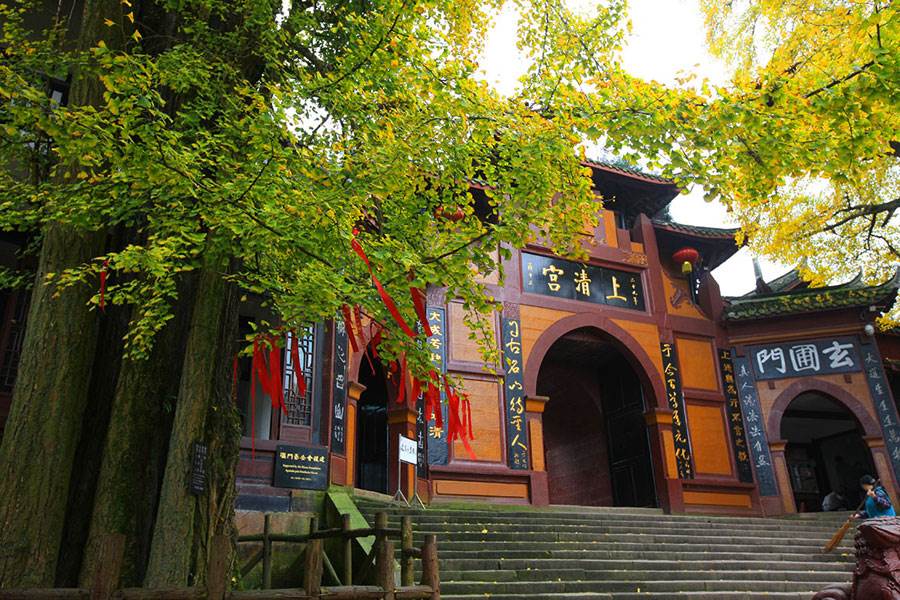
Shangqing Temple is located near the summit of the Qingcheng Mountain. It was originally built in Jin Dynasty(266-420). The current buildings could be dated back to 1860s in Qing Dynasty. Shangqing is a title referring to one of the top three gods in Taoism. It contains three main buildings along the east to west axis, including the entrance gate, Laojun Hall, and the Grand Hall of Top Three Gods.
There is an inscribed board on the top of the entrance gate. It reads Shangqing Temple from the right to the left. The three Chinese characters were drawn by Chiang Kaishek in 1940. One of the couplets hanging on both sides was written by Yu Youren, a famous calligraphist. The two lines of verse mean that even the grass and plants across the mountain have been bathed in the rays of Taoist immortals; Qingcheng Mountain always welcomes visitors far and near since ancient times. There are two halls behind the entrance gate on both side of the axis. One contains a green dragon, and the one has a white tiger. They serve as temple guardians.
Laojun Hall is devoted to Laozi, the top God of Taoism. Laozi sits in the middle. The figures on both sides are Zhang Sanfeng and Lv Dongbing. Both are celebrities and immortals in Taoism. Zhang Sanfen was the creator of Tai Chi Boxing. Lv Dongbing was born in 798 in Tang Dynasty. He practiced his Taoism in the whole of his life. His story is very popular in China. One of those stories is the Eight Immortals Cross the Sea. He was granted with the title as the founding master of Quanzhen Taoism.
The Hall of Top Three Gods is called Sanqing Hall in Chinese. Sanqing refers to the top three gods in Taoism, including Yuqing, Shangqing and Taiqing. Taoists call them the gods of three purity. There are top twelve assistants sitting on both sides in the hall.
The temple also contains a memorial hall Zhang Daqian(1899-1983), a very famous artist in China. He lived in Qingcheng Mountain for three years, after he came back from Dunhuang Grottoes.
Laojun Tower
Laojun Tower is located on the Laoxiao Summit, where is 1,260 meters above sea level. The building was rebuilt after the terrible earthquake happened in 2008. The statue of Laozi enshrined inside is 13.6 meters in height.
- HOTEST
- RECOMMEND
